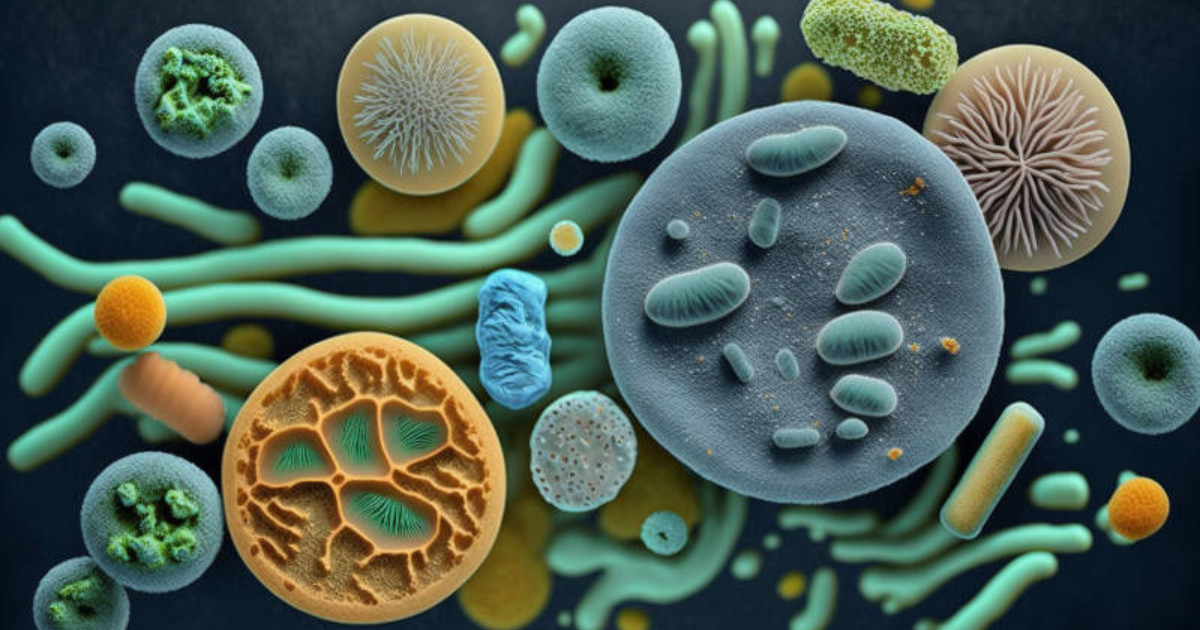Sodium Benzoate is a common food preservative that has been used for decades to extend the shelf life of products. However, recent research has shown that this common ingredient may pose significant health risks.
In this article, we will explore four scary health risks associated with sodium benzoate that may blow your mind. It’s important to note that the research on this substance is ongoing, and more studies are needed to fully understand its effects on human health.
Table of Contents
Sodium Benzoate: A Brief History
It is hard to attribute the discovery of this chemical to any one source. It is more a case of many hands, over centuries, made for lighter work.
Sodium benzoate (C7H5O2Na) was arguably first encountered circa 1556 by Michel Nostradamus when he first dry-distilled gum benzoin. The widely held hypothesis here is that as this chemical is the sodium salt of benzoic acid (C7H6O2), the discovery of this compound naturally arose as an interconnected consequence of the dry-distilling process. 1 2
According to the German publication “Römpps Chemie-Lexikon” notable involvement after Nostradamus’ included Alexius Pedemontanus, circa 1560, and Blaise de Vigenère, circa 1596. 3
The identification of sodium benzoate is attributed to Friedrich Wöhler and one of his students, Justus von Liebig, who were successful in determining its chemical structure. 4
In the 1970s, concerns began to emerge about the safety of the chemical. Studies suggested that it could cause cancer in laboratory animals, and it was banned in some countries. More on that later.
However, further research found that the levels of sodium benzoate used in food products were not high enough to cause cancer in humans. As a result, most countries continue to allow its use as a food preservative. 5 6
Today, it is still widely used in food and beverage products, as well as in pharmaceuticals and personal care products. It is considered safe for use in small amounts, but many concerned voices advocate that more research is needed to fully understand its potential health effects.
Where does Sodium Benzoate come from?
It is a chemical compound that is derived from benzoic acid. Benzoic acid is a naturally occurring substance that is found in many fruits and vegetables, such as berries, plums, and cinnamon. It is even found in Shilajit and is one of the primary reasons why people seek out this mineral-dense resin.
However, the benzoic acid which is used to make sodium benzoate is not usually derived from natural sources. Instead, it is typically produced by the oxidation of toluene, which is a hydrocarbon that is derived from petroleum or coal tar. That’s very different, to say the least. 7 8
This process produces a white powder that is then combined with sodium hydroxide to produce sodium benzoate.
What is the Difference Between Benzoic Acid and Sodium Benzoate?
Benzoic Acid and Sodium Benzoate are related compounds, but they are not the same thing. Sodium benzoate is the sodium salt of benzoic acid, which means it is a compound made up of one molecule of benzoic acid and one molecule of sodium. 9 10 11
Benzoic Acid is a weak organic acid, whereas sodium benzoate is a salt that is often used as a food preservative because it can prevent the growth of certain microorganisms.
Both are used as food preservatives but sodium benzoate is more soluble in water and is often used in carbonated drinks and other products where it is desired to maintain the carbonation.
Why Use One Instead of the Other?
There are a few reasons why one might use sodium benzoate instead of benzoic acid, or vice versa, as a food preservative.
One reason is solubility.
It is more soluble in water than benzoic acid, which means it can be more easily incorporated into aqueous solutions such as carbonated drinks. So, it is commonly used in carbonated soft drinks, pickles, fruit juices, salad dressings, and other products where it is desired to maintain carbonation.
Another reason is pH.
Benzoic acid is more effective as a preservative in acidic conditions (pH<4.5). So, it is commonly used in acidic foods such as jams, jellies, and pickles where the pH is already low.
Another reason is food tolerance and dietary needs.
Some people may have a preference for using one or the other based on dietary restrictions. For example, people on a low-sodium diet may prefer to avoid foods that contain sodium benzoate, and instead, choose those preserved with benzoic acid.
How Sodium Benzoate is used Today
It is used today primarily as a food preservative. It is used to prevent the growth of bacteria, yeasts, and molds in a wide variety of consumable products including pharmaceuticals, cosmetics, foods, and beverages. Some common products that contain this preservative include carbonated soft drinks, pickles, fruit juices, salad dressings, and condiments.
It can also be used to preserve the colour and flavour of food along with preventing previously touched upon types of spoilage, which, therefore, extends the shelf-life of the product.

In addition to its use as a preservative, it has other applications. It can be used as an intermediate in the synthesis of other chemicals, as a corrosion inhibitor, and as a flame retardant.
There are a wide variety of foods containing it, including: 12
- Carbonated soft drinks and fruit juices
- Jams, jellies and other fruit preserves
- Salad dressings and condiments
- Pickles, olives and other pickled products
- Baked goods
- Dried fruit
- Frozen foods
- Dehydrated vegetables
- Food colorings and flavorings
- Personal care products such as mouthwash, shampoo, body lotion, and
- Some medications and vitamin supplements
It is used as a preservative because it has antimicrobial properties. However, it’s worth noting that it is also used as a flavoring agent and a pH adjuster.
5 Sodium Benzoate Health Risks
There are several potential health risks associated with the consumption of sodium benzoate. These include:
- Allergic reactions
- Although rare, some individuals may be allergic to it, and it can cause symptoms such as hives, itching, and difficulty breathing. 13
- Asthma
- It has been linked to an increased risk of asthma in some individuals. 14
- Hyperactivity in children
- Some studies have suggested that consuming high levels of this preservative in food products may contribute to hyperactivity in children. 15
- Potential Carcinogenic
- Sodium benzoate, combined with Vitamin C (ascorbic acid), is understood to produce a known carcinogen called benzene. This reaction is not limited to sodium benzoate, it also occurs with potassium benzoate and other benzoate salts. Not only is this combination understood to have carcinogenic potentials, but it has also been linked to potential testicular dysfunction in tests. 16
- Damage to DNA
- Studies have suggested that it may have the ability to damage DNA, which could increase the risk of cancer. 17
It’s important to note that most of these risks are based on studies done on animals, or in labs under controlled conditions; think cells, Petrie dishes, and test tubes, and the results in some cases may not be directly proven as applicable to humans. Also, the risks are associated with high doses of it and not the normal usage found in food or beverages.
It’s also important to mention that it is just one ingredient in many mass-produced food products, it’s always best to consume a balanced wholefood diet and limit your intake of processed foods and drinks.
Concerns About Sodium Benzoate Toxicity
Additional to the information provided in the summary above, the following is worth keeping in mind for contextual purposes when considering the consumption and use of this product.
When it’s in food and is consumed in high doses (higher than permitted under food regulations), or over the long term, exposure is understood to lead to varying levels of toxicity.
Additional to the outline provided earlier, the potential health effects may also include gastrointestinal issues such as stomach pain, nausea, and vomiting. 18
Various Cancers
Sodium benzoate has been studied for its potential link to cancer, but the results are not conclusive. The previously mentioned DNA damage is what has been suggested to be the potential catalyst for increasing the risk of cancer.
However, it’s important to note that the levels of the preservatives used in these studies are much higher than those typically found in food and beverages. And that more research is needed to fully understand the potential link between it and cancer.
Respiratory Problems
Some studies have suggested that it may be linked to respiratory problems, but again, the argument is that the evidence here is not conclusive.
A study published in 2022 reported that inhaling high concentrations of sodium benzoate dust can cause respiratory problems such as shortness of breath, coughing, and chest tightness. 19
However, these symptoms were not observed at lower concentrations and in normal usages, such as in food and beverages.
It’s important to consult with a healthcare professional if you have any concerns about respiratory problems and sodium benzoate, and also, if you work with it in dust form, it’s best to take the necessary precautions and follow the safety guidelines.
Heart Disease
There is limited research on the link between sodium benzoate and heart disease. Some studies have suggested that consuming much higher than normal levels of the preservative may contribute to high blood pressure and other cardiovascular problems. 20

The American Heart Association recommends limiting the intake of sodium in the diet to less than 2,300 milligrams per day. Sodium benzoate is a source of sodium, but the amount used in food and beverages is generally low, and it is not considered a significant contributor to overall sodium intake. 21
It’s important to note that heart disease is a complex condition that can be caused by a variety of factors, such as genetics, lifestyle, and diet. A healthy diet, regular exercise, and not smoking are some of the best ways to reduce the risk of heart disease.
Leukemia
This is a bit of a hot topic for some people. There is some evidence to suggest that it may be linked to an increased risk of leukemia, but the evidence is not conclusive.
It’s important to note that more research is needed to fully understand the potential link between sodium benzoate and leukemia, and the majority of studies in this area did not find significant links.
Also, other factors such as genetics, lifestyle, and diet play a role in the development of leukemia.
6 Tips to Make Informed Choices with Sodium Benzoate
- Read the ingredient list
- Always check the ingredient list of the products you buy and look for sodium benzoate, so you can make an informed choice. Try using the Yuka app to help you easily decode what is going on here.
- Be aware of the daily intake
- The FDA has set a daily intake limit of 5 milligrams per kilogram of body weight per day (mg/kg/day) for sodium benzoate. Be aware of the amount you consume daily and make sure it’s within the recommended limit. 22
- Avoid processed foods
- Processed foods often contain high levels of this, so try to limit your intake of these foods.
- Look for alternatives
- Some food products, such as pickles and condiments, come in both preserved and natural versions. Choose the natural versions, or make your own at home.
- Consider dietary restrictions
- If you are on a low-sodium diet or have any other dietary restrictions, be mindful of the content in the products you buy.
- Consult with a healthcare professional
- If you have any concerns about this preservative and its potential health effects, consult with a healthcare professional. They can provide you with personalised advice and help you make informed choices about your diet.
FAQs
Is Sodium Benzoate Safe in Food?
To summarise the content covered in various sections of this article, it is considered safe for use in food by regulatory agencies such as the FDA in the US, and EFSA in Europe. These agencies set guidelines for the safe use of food additives and ensure that they do not pose a risk to human health. The FDA has set a daily intake limit of 5 milligrams per kilogram of body weight per day (mg/kg/day) for sodium benzoate.
However, it’s important to note that some individuals may be allergic to it, which can cause symptoms such as hives, itching, and difficulty breathing. Also, some studies have suggested that consuming high levels of it may contribute to hyperactivity in children, asthma, and other health problems. However the majority of scientific studies find no such link and that it’s safe to consume in normal amounts.
It’s always best to consult with a healthcare professional if you have any concerns about this additive and its potential health effects. Also, you may consider reading the ingredient list of the products you buy and looking for this, so you can make an informed choice.
Is Sodium Benzoate Safe for Your Skin?
It is considered safe for use in personal care and cosmetic products by regulatory agencies such as the FDA in the US, and EFSA in Europe. It is used as a preservative in some skincare and beauty products.
However, it’s important to note that some individuals may have sensitive skin and can develop irritations or allergic reactions to some ingredients including this. Before using any new product, it’s always best to patch-test it first and if you notice any signs of irritation, discontinue use.
It’s also important to keep in mind that while it is safe to use in cosmetics, it is not a moisturiser or an anti-aging agent, and it’s not going to have any specific benefit for the skin. It’s always best to consult with a healthcare professional or a dermatologist if you have any concerns about the safety of a specific product or any other skin-related issues.
Is Sodium Benzoate the same as Baking Soda?
No, this and baking soda (sodium bicarbonate) are not the same thing. Sodium benzoate is a food preservative and an organic chemical compound, it is the sodium salt of benzoic acid.
Baking soda, also known as sodium bicarbonate, is a leavening agent that is commonly used in baking to help dough rise. It is also used as a household cleaner and as an antacid. It is a white powdery substance that is naturally alkaline and has a salty taste.
They both have different properties and uses. They are not interchangeable and should not be used as a substitute for each other.
Is Sodium Benzoate in Soap Safe?
It is considered safe for use in personal care products, including soap.
However, as with any personal care product, it’s important to patch test the soap before using it, especially if you have sensitive skin, as some individuals may have an allergic reaction to it. If you notice any signs of irritation, discontinue use.
It’s also important to note that some people may prefer to use natural or organic soaps that don’t contain chemical preservatives like this. These types of soaps may be beneficial for sensitive skin.
It’s always professional or a dermatologist if you have any concerns about the safety of a specific product or any other skin-related issues.
Conclusion
This chemical is a common food preservative that has been deemed safe for consumption by regulatory agencies such as the FDA and EFSA. It is effective in preventing the growth of bacteria, yeasts, and molds in a wide variety of foods and beverages, and it can help extend the shelf life of products.
When it comes to personal care products, it is considered safe for use, but as with any product, it’s important to patch test it before using and if you notice any signs of irritation, discontinue use. Some people may prefer to use natural or organic products that don’t contain chemical preservatives like sodium benzoate.
It’s always best to consult with a healthcare professional or a dermatologist if you have any concerns about the safety of a specific product or any other health-related issues. Additionally, it’s always best to consume a balanced diet and limit your intake of processed foods and drinks.
Reading the ingredient list, checking the daily intake, and being aware of dietary restrictions are some of the best ways to make informed choices when it comes to products like this.
Join the conversation on Instagram and Pinterest and let us know your thoughts!
References
- “Benzoic Acid – Natures preservative” – Redox Staff, 20 October 2021 [Redox] [Archive] ↩︎
- “Sodium Benzoate – History” – A. Lovelock, 21 June 2006 [Univeristy of Bristol School of Chemistry] [Archive] ↩︎
- “Römpps Chemie-Lexikon” 6th Edition – O. A. Neumüller, 1988 [Wikipedia] [Archive] ↩︎
- “Benzoic acid” – New World Encyclopedia Staff, 27 August 2019 [New World Encyclopedia] [Archive] ↩︎
- “Benzoic acid; CASRN 65-85-0” – U.S. Environmental Protection Agency, 7 September 1988 [National Center for Environmental Assessment] [Archive] ↩︎
- “Concise International Chemical Assessment Document 26” – A. Wibbertmann, J. Kielhorn, G. Koennecker, I. Mangelsdorf, C. Melber, 2000 [World Health Organization] [Archive] [WHO Iris] [Archive] ↩︎
- “Process for the Production of Sodium Benzoate” – W. D. Wolf, 1976 [Google Patents] [Archive] ↩︎
- “Sodium Benzoate” – Puracy Staff, 26 April 2020 [Puracy] [Archive] ↩︎
- “Difference Between Benzoic Acid and Sodium Benzoate” – S. Madhu, 18 November 2019 [Difference Between] [Archive] ↩︎
- “Sodium Benzoate” – PubChem Staff, 27 March 2005 [PubChem] [Archive] ↩︎
- “Benzoic Acid” – PubChem Staff, 16 September 2004 [PubChem] [Archive] ↩︎
- “Benzoic acid and its derivatives as naturally occurring compounds in foods and as additives: Uses, exposure, and controversy” – A. del Olmo, J. Calzada, M. Nuñez, 20 November 2015 [Taylor & Francis] [Archive] ↩︎
- “Sodium benzoate-induced repeated episodes of acute urticaria/angio-oedema: randomized controlled trial” – E. Nettis, M. C. Colanardi, A. Ferrannini, A. Tursi, October 2004 [PubMed] [Archive] ↩︎
- “Asthma induced by sulphur dioxide, benzoate and tartrazine contained in orange drinks” – B. J. Freedman, 1977 [PubMed] [Archive] ↩︎
- “Food additives and hyperactive behaviour in 3-year-old and 8/9-year-old children in the community: a randomised, double-blinded, placebo-controlled trial” – D. McCann, A. Barrett, A. Cooper, D. Crumpler, L. Dalen, K. Grimshaw, E. Kitchin, K. Lok, L. Porteous, E. Prince, E. Sonuga-Barke, J. O. Warner, J. Stevenson, 2007 [PubMed] [Archive] ↩︎
- “Questions and Answers on the Occurrence of Benzene in Soft Drinks and Other Beverages” – FDA Staff, 25 February 2022 [FDA] [Archive] ↩︎
- “Effect of sodium benzoate on DNA breakage, micronucleus formation and mitotic index in peripheral blood of pregnant rats and their newborns” – C. Saatci, Y. Erdem, R. Bayramov, H. Akalın, N. Tascioglu, Y. Ozkul, 7 December 2015 [Taylor & Francis] [Archive] ↩︎
- “Sodium benzoate for treatment of hepatic encephalopathy” – M. L. Misel, R. G. Gish, H. Patton, M. Mendler, April 2013 [PubMed] [Archive] ↩︎
- “Sodium Benzoate – Harmfulness and Potential Use in Therapies for Disorders Related to the Nervous System: A Review” – Ł. J. Walczak-Nowicka, M. Herbet, April 2022 [PubMed] [Archive] ↩︎
- “Effect of oral intake of sodium benzoate on some haematological parameters of wistar albino rats” – S. E. Ibekwe, A. A. Uwakwe, M. O. Monanu, 12 December 2006 [Academic Journals] [Archive] ↩︎
- “Salt” – C. Erlinger, 7 July 2017 [The Heart Foundation] [Archive] ↩︎
- “CFR – Code of Federal Regulations Title 21” – FDA Staff, Last Updated 17 January 2023 [FDA] [Archive] ↩︎
Last Updated on 3 months by D&C Editorial Team


